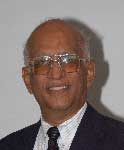 |
 |
Roots of Automation Innovation
By : Jim Pinto, Trace the roots of all significant automation business segments and you'll find key innovations. Few larger companies come up with major new developments; an exception was the DCS, developed by engineers within Honeywell. The PLC was the brainchild of prolific inventor Dick Morley and others. Several innovative startups grew fairly rapidly with HMI software for PCs. Rosemount's growth can be traced to its innovative capacitive differential-pressure sensors.
March 2007
|
 It's interesting to review the part that Innovation has played in the automation world. Trace the roots of all significant automation business segments and you'll find key innovations.
It's interesting to review the part that Innovation has played in the automation world. Trace the roots of all significant automation business segments and you'll find key innovations.
Industrial instrumentation and controls has always been a hotbed of new products - sensors and actuators and all the "stuff" in between - signal-conditioners, displays, recorders, controllers, valves, actuators. Because industrial markets are relatively specialized and rarely generate high volume, products are usually high-priced, with limited applications in other markets. Many automation companies were founded with innovative developments for niche applications. Successful startups expanded their products and markets beyond initially narrow applications and geographies, depending on the real value of the innovation, and also whether or not the founder was able to hire suitable leaders to grow the company beyond the initial entrepreneurial stages. Since automation is such a fragmented business, all the major companies have a conglomeration of products, each with relatively small volume, but lumped together to form sizeable businesses. Indeed, companies like Ametek and Spectris have grown primarily through acquisition of small, innovative, niche product companies where growth is self-limited either through lack of capital for new products and or global sales & market expansion. Indeed, these industrial mini-conglomerates thrive through astute and shrewd accumulation of innovative niche players. But few larger companies rarely come up with follow-through developments that match the original founder's innovations. This relates to Clayton Christiansen's point (in his book, "The Innovator's Dilemma") - that Innovation cannot easily be "managed". And so larger companies usually grow incrementally with managed product extensions - with few, really innovative breakthroughs. Major automation segmentsAn exception to the startup-innovation rule was the distributed control system (DCS), a mix of several important innovations developed in the early 1970's by a team of engineers within Honeywell. This generated a new category which achieved $100m annual revenue within just a couple of years and the segment has since expanded to several billions of dollars worldwide.The other major automation segment to achieve significance, also in the 1970ís, was the programmable logic controller (PLC). This breakthrough innovation was the brainchild of the prolific inventor Dick Morley, and one of his first PLCs is on display at the Smithsonian. He worked for Bedford Associates, a small development company associated with Modicon (now part of Schneider). Also contributing to this innovation was Odo Struger of Allen-Bradley, now Rockwell Automation, which leveraged this innovation to become the U.S. PLC market leader. The first PLCs were developed for specific applications - reprogrammable test installations in the automobile manufacturing business, replacing hard-wired relay-logic which was hard to modify. This innovation resulted in a market segment that has also grown to several billions of dollars worldwide. Another major industrial automation segment is termed "Supervisory Control and Data Acquisition" (SCADA). This loose conglomeration of products was fragmented between several markets and applications till networked PCs and Windows-based HMI software arrived in the late '80s and '90s, when several innovative startups grew fairly rapidly, offering human-machine interface (HMI) software with connections to remote PLCs and indusrial I/O. It's interesting to note that the larger automation vendors did not take the lead in new PC software; all significant growth came from innovative startups. Wonderware (started by dynamic engineer Dennis Morin) was paced by Intellution (started by ex-Foxboro engineer Steve Rubin). There were several other startups in the same timeframe, but few achieved significance. Although utilized across a broad array of market segments, the total available market for independent packaged software was limited, and as growth started to fizzle, the large process controls suppliers acquired the leaders. Wonderware was acquired by Invensys, which owned Foxboro; Emerson acquired Intellution as a key part of its DCS strategy. Some like Citect, an innovative Australian company, branched out into broader software and systems arenas till they inevitably got acquired - by Schneider. Sensors & ActuatorsLet's get to sensors and actuators. Rosemount started with special temperature sensors (RTDs), but grew rapidly with the development of its innovative capacitive differential pressure sensors which rapidly overtook the traditional instrumentation leaders - Foxboro, Honeywell and others. Rosemount gained market leadership and was eventually acquired by Emerson, which also acquired other innovative sensor companies - Brooks (flow), Beckman (pH) and several others.Fisher Controls was started in Iowa by Bill Fisher, making innovative valves and actuators. It was acquired by Monsanto, and later by Emerson. Interestingly, both Rosemount and Fisher tried to grow by branching out into DCS, but their offerings were relatively insignificant till Emerson put them together with PCs and Software (Intellution and other ingredients) to generate leadership with Delta V. With this combination, Emerson Process Systems is now considered the leading US process controls supplier. 
|
 Pinto's Points How to win in the Automation Business Go shopping - books, electronics, CD/DVD Selected advertising coming here. Contact Jim Pinto for rates. |
Return to Index of all JimPinto Writings

 Return to JimPinto.com HomePage
Return to JimPinto.com HomePage
If you have ideas or suggestions to improve this site, contact: webmaster@jimpinto.com
Copyright 2006 : Jim Pinto, San Diego, CA, USA
